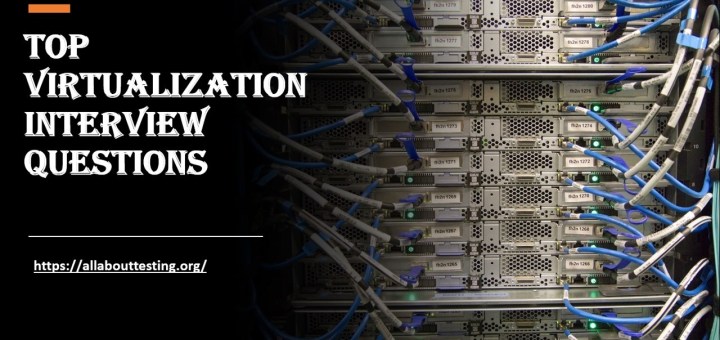Top Virtualization Interview Questions [Updated 2025]

Q. Explain Virtualization.
Ans: Virtualization is a concept in which dozen of different machines (such as a server, storage device, network device, etc.) for different purposes can be installed on one piece of hardware. It also helps in providing different machines for confidentiality, integrity, and availability by using secure configurations. Generally, a virtualization manager is used for managing different machines.
Q. Mention types of virtualization.
Ans:
- Data Virtualization
- Desktop Virtualization
- Operating System Virtualization
- Storage Virtualization
- Server Virtualization
- Network Virtualization
- Application Virtualization
Q. What are the benefits of virtualization?
Ans:
- Flexibility - can be moved frequently without much overhead
- Consolidation of workload - easily managed by virtualization manager, e.g., Hypervisor
- Efficiency - reduce wastage of resources, mobility helps in load balance across hosts
- Secure and faster provisioning of resources
Q. What is Data Virtualization?
Ans: It is a concept of analyzing the data and presenting it in a more informational format without worrying about the sources and format of data. Sources may be Packaged apps, RDBMS, Excel & flat files, Big data, XML docs, Cloud data, Web services, IoT data, etc.
Q. What are the examples of Containerization?
Ans: Docker and Kubernetes are popular examples of containerization.
Q. What is the difference between virtual machines and containers?
Ans: Virtual Machine(VM) is an emulator for hosting desktops, web servers, database servers, network devices, etc. It felicitates the installation of different virtual IT machines on the same bare metal.
Containers are useful for deploying software applications. It isolates the environment for many applications for running, deploying, and testing by using the same physical resources. It specifically uses the same host operating system.
Q. What is Hypervisor?
Ans: Hypervisor is an IT system that is used to create and manage virtual machines. It is the middle layer between the hardware and virtual machines.
Q. What are the types of hypervisors available in the market?
Ans: There are two types of Hypervisors:
- Type 1 hypervisors: Hardware, Bare metal type. The virtualization manager is installed directly on the hardware to manage different virtual machines (VMs).
- Type 2 hypervisors: Virtualization manager installed on another host OS to manage virtual machines.
Q. What is QEMU?
Ans: QEMU is a generic and open source machine emulator. It can be used as an alternative to VMWare.
Q. What is Desktop Virtualization?
Ans: As the name suggests, desktop virtualization is the technology in which users access personalized desktops on any computer in a network. Virtualized desktops are installed on the central server instead of personal hardware.
Q. What is Docker?
Ans: Docker is an open-source technology that helps in developing and running applications, and it isolates the application from the host infrastructure.
Q. Mention hypervisor is available in Linux.
Ans: Xen Project & Red Hat's Kernel-based Virtual Machine (KVM): both are open-source.
Subscribe us to receive more such articles updates in your email.
If you have any questions, feel free to ask in the comments section below. Nothing gives me greater joy than helping my readers!
Disclaimer: This tutorial is for educational purpose only. Individual is solely responsible for any illegal act.








